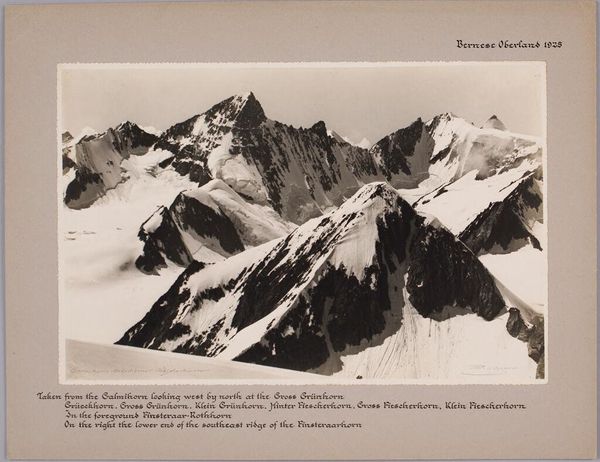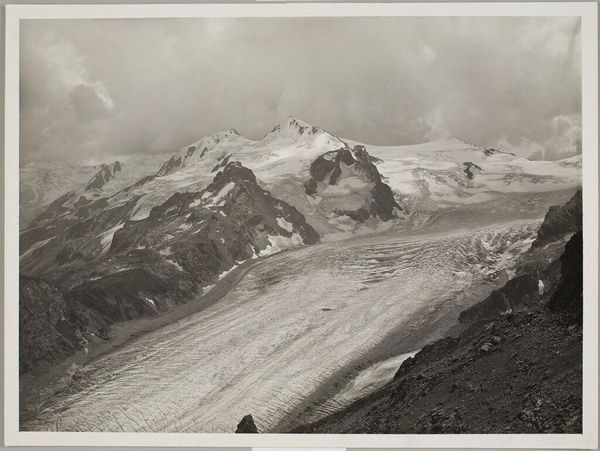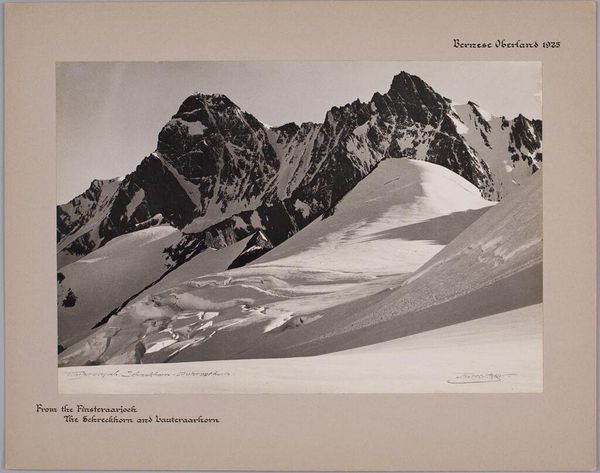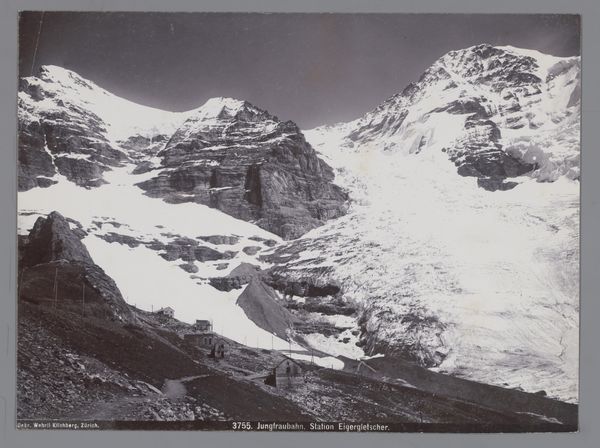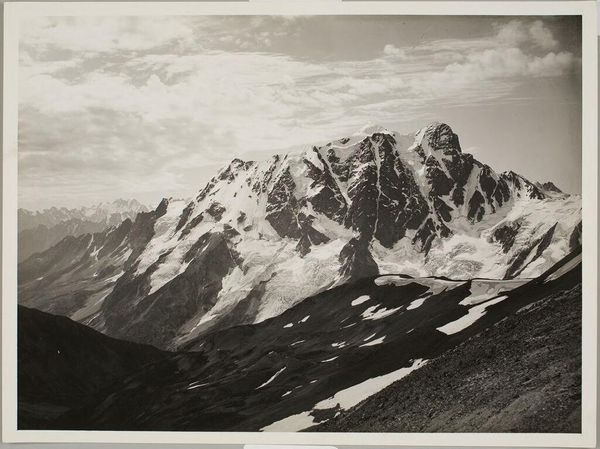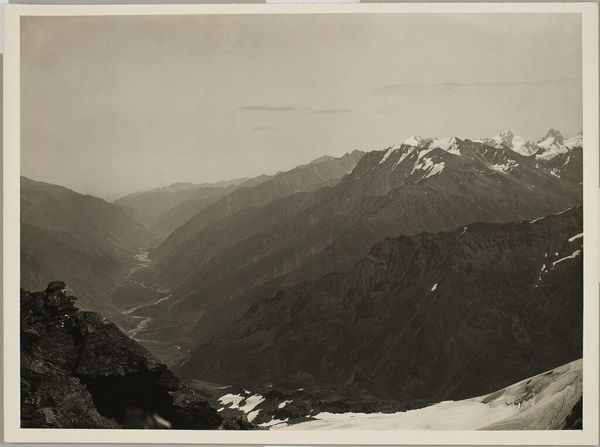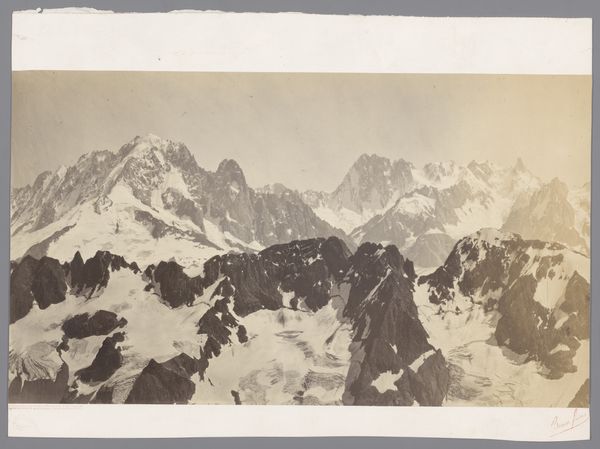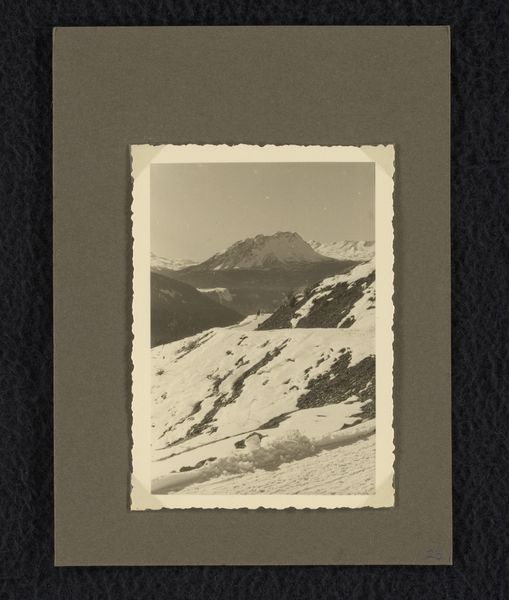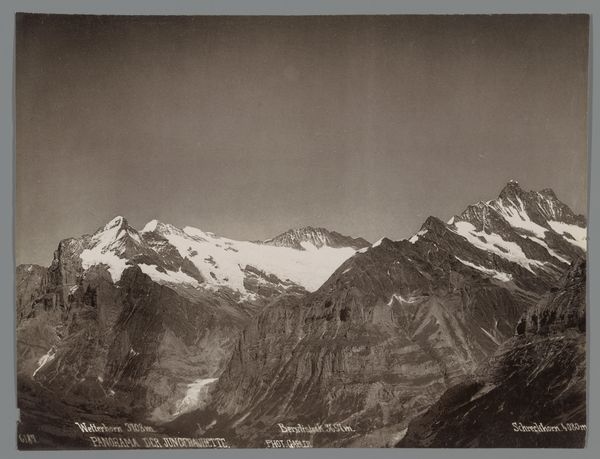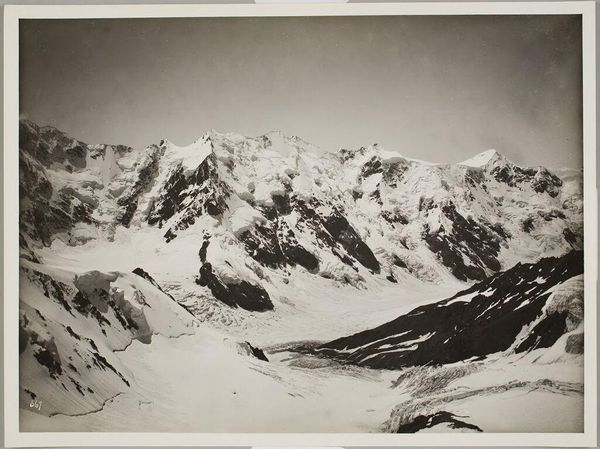
photography, gelatin-silver-print
#
pictorialism
#
landscape
#
photography
#
mountain
#
gelatin-silver-print
#
monochrome
Dimensions: height 82 mm, width 220 mm
Copyright: Rijks Museum: Open Domain
Curator: This Gelatin silver print, attributed to the Gebrüder Wehrli and titled "Gezicht op de Furkapas en de Berner Alpen," captures a panoramic view of the Furka Pass and the Bernese Alps sometime between 1897 and 1924. Editor: Striking! It feels vast and imposing, almost unsettling in its starkness. The monochrome tones emphasize the monumental scale of the mountains, turning nature into a subject of awe and quiet terror. Curator: Indeed. Consider how Pictorialism, with its emphasis on soft focus and evocative tones, aligns with contemporary Romantic sentiments. Mountain landscapes weren't just about geographical documentation; they represented sublime power, challenging human insignificance. Editor: It's interesting that this photograph immortalizes a Swiss landscape during a period when the rise of tourism in the Swiss Alps and mountain passes was significantly reshaping regional economies. The majestic Swiss mountains became objects of commodification and consumption by the public. The location—the Furka Pass—acted as a node for facilitating travel, leisure, and commercial exchanges. Curator: Precisely! But within the composition, observe the interplay of light and shadow, a sophisticated negotiation of tones across the rugged peaks and valleys. The monochrome flattens the scene, creating a kind of flattened plane that, paradoxically, heightens the textural complexity of the snow, rock, and sky. It's almost abstract in places. Editor: What's compelling to me is thinking about how photographs like this helped to disseminate the idea of the "Swiss Alps." This photographic image also provides a record of changes made to this region with its newly constructed passes. Its pictorial quality softens our sense of industrial incursion with tourism. Curator: That softening reminds me how photography adapted painting conventions into its repertoire, thereby shaping collective perception. These artists turned photography into an art form by aestheticizing reality and engaging with prevailing ideas about natural beauty. Editor: I see it. As we wrap up, this work reminds us how a singular visual artifact connects historical forces, the romantic ideal, and a reevaluation of photographic processes as an artistic technique. Curator: A powerful encapsulation of how visual culture intersects with historical trends, stylistic conventions, and shifting modes of perception, indeed.
Comments
No comments
Be the first to comment and join the conversation on the ultimate creative platform.
